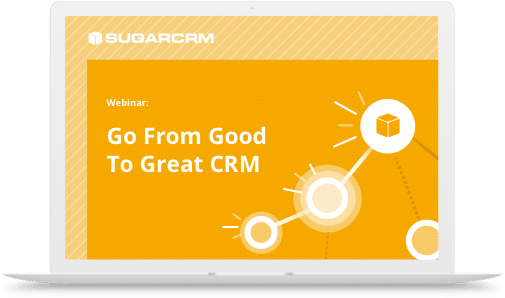
What is CRM user adoption and why it matters
Many organizations undergo an overhaul or replacement of their CRM systems or technologies. When this happens, common challenges can arise with adoption across users who are not fully prepared for the change they’re going to experience.
The simple fact is that user adoption is a key element to making or breaking any CRM deployment. A survey conducted by Forrester Research revealed that three distinct “people issues” presented the biggest challenge to successful CRM implementation; these being slow user adoption (the biggest challenge), inadequate change management and training, and alignment of the organization with new ways of working. Thankfully, there are strategies that organizations can use to effectively boost and sustain CRM adoption to avoid these common pitfalls.
Webinar: Optimizing User Adoption
Learn how to combine modern CRM and effective adoption strategies for successful implementation of your CRM.
Strategies for successful CRM user adoption

Strategy 1: Communicate Value
In order to communicate value, you will need to educate your users on the benefits of CRM and how it will make their lives easier. To do this, conduct a meeting with users to showcase the value of the CRM system. For instance, use the meeting to highlight the benefits of the CRM (such as automating certain mundane tasks and using automation to give them better visibility into information that is most important to them). Remember to make your meeting relatable and relevant.
Strategy 2: Incentivize Users
Make sure to recognize and reward users for successful usage. Use positive reinforcement to your advantage by providing rewards for completing tasks, incorporating gamification, and providing peer recognition.
Strategy 3: Internal Champion
Have a strong CRM champion to motivate other users. Users who see the CRM value and adopt it successfully are more likely to share the positive experiences with others. Make sure to offer rewards, positive reinforcement and training.

Strategy 4: Change Management
Show users how to leverage your CRM investment. Often, slow user adoption results from resistance against change. Strategies to prepare for pushback against change include: engaging users early for feedback, establishing implementation as a program, customizing training materials, and conducting listening sessions.
Strategy 5: Happy User
A happy user is vital to successful CRM adoption. Keep your users happy, committed to CRM usage and consistently engaged. Make sure to continue engaging with users and monitoring usage beyond the initial CRM adoption. Sincerely thank and recognize users for their progression and adoption of CRM.
To summarize…
Educate users on CRM benefits
Recognize and reward users for usage
Have a champion to motivate others
Show users how to leverage CRM
Keep users happy, committed & engaged